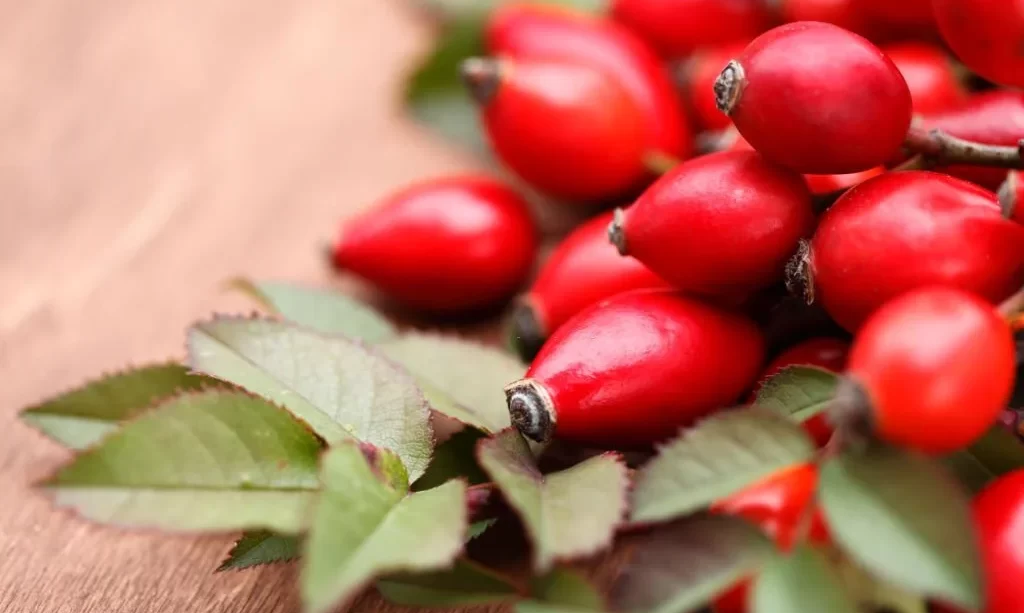Rose hips, the vibrant and nutrient-packed fruits of the rose plant, are like hidden gems in the world of edible and beneficial plants. These tiny, colorful orbs are often overlooked, yet they hold a multitude of possibilities waiting to be discovered. If you’ve ever wondered what to do with rose hips or why they are worth your attention, you’re in for a delightful journey. In this article, we’ll explore the fascinating realm of rose hips, from understanding their characteristics to unveiling the many creative uses and benefits they offer. Whether you’re a seasoned forager, a culinary enthusiast, or simply curious, get ready to unlock the secrets of these versatile and healthful gifts from nature.
Rose Hips
Before we delve into the diverse uses and benefits of rose hips, it’s essential to get acquainted with these remarkable fruits. Rose hips are the fruit of the rose plant (genus Rosa), and they come in various shapes, sizes, and colors, ranging from deep reds to vibrant oranges. They often resemble small, round or oval berries and can be found growing on rose bushes after the petals have fallen. While their vibrant hues catch the eye, it’s what lies within that truly makes them special.
Inside the rose hip, you’ll discover tiny seeds encased in a fleshy, nutritious pulp. It’s this pulp that contains a treasure trove of vitamins, particularly vitamin C, and antioxidants. In fact, rose hips are known to have one of the highest vitamin C contents of any fruit. These attributes not only make rose hips a culinary delight but also endow them with potential health benefits, ranging from immune support to anti-inflammatory properties.
As we continue, you’ll learn how to harvest rose hips and unlock their culinary, medicinal, and decorative potential. Whether you’re looking to create delicious dishes, explore natural remedies, or add a touch of autumnal beauty to your surroundings, rose hips have something special in store for you.
Harvesting Rose Hips
Harvesting rose hips is a rewarding and straightforward endeavor, but timing and attention to detail are key. Here’s how to do it:
- Timing is Everything: Rose hips are typically ready for harvest after the first frost, usually in late fall or early winter. This cold spell triggers their sweetness and ripening.
- Identifying Ripe Rose Hips: Look for rose hips that are firm, plump, and brightly colored. They should have a vibrant hue, ranging from deep red to orange. Avoid picking shriveled or discolored hips.
- Wear Gloves: It’s advisable to wear gloves when harvesting rose hips to protect your hands from the plant’s thorns. While rose thorns are typically not as formidable as they look, they can still be prickly.
- Cut or Twist: Use scissors or pruning shears to snip the rose hips from the plant, or gently twist them off by hand. Be cautious not to damage the plant in the process.
With your ripe rose hips in hand, you’re now ready to explore their culinary and healthful potential.
Culinary Uses of Rose Hips
Rose hips are not only visually appealing but also a delightful addition to your culinary repertoire. Here are some creative ways to use them:
- Rose Hip Jam or Jelly: Transform your harvest into sweet spreads by making rose hip jam or jelly. Their tangy and slightly floral flavor adds a unique twist to your morning toast or pastries.
- Rose Hip Syrup: Create a flavorful syrup by simmering rose hips with sugar and water. This syrup can be drizzled over pancakes, waffles, or used as a base for refreshing beverages.
- Rose Hip Tea: Make fragrant and healthful herbal tea by steeping dried or fresh rose hips in hot water. It’s a soothing and vitamin C-rich option, especially during the cold months.
- Desserts: Incorporate rose hips into desserts like pies, tarts, or cakes. Their tartness can balance the sweetness of your favorite treats.
Exploring the culinary world of rose hips adds a touch of elegance and unique flavor to your dishes.
- [RUITY FLAVOR AND AROMA] – TeeLux Rose Hips Tea is made from natural and premium quality rose hips, which deliver a smooth & slightly sweet taste, light fruity flavor and aroma.
- [HEALTHY BENEFITS] – Rose Hips tea is naturally rich in vitamin C, it also contains other vitamins and minerals, carotene, flavonoids, fruit acids, tannins, pectin, sugars, amino acids, essential fatty acids, which has a wide range of health benefits.
- [PREMIUM ROSE HIPS] – We strictly select fresh, wild rosehip plants, hand-picked and sun-dried them carefully to bring you pure and fresh tea and let you experience the true taste of the tea.
- [LOOSE LEAF TEA] – TeeLux rose hips loose leaf allows you to customize each cup of tea to your own sipping preferences. Simply place 5g rosehips in your favorite cup and add 8fl.oz of boiling water, steep for 10-12 minutes for maximum aroma and better taste.
- [BETTER SERVICE] – We don’t think you should pay for a product you don’t like. If our rosehip tea does not meet your expectations, please feel free to let us know and we will be happy to refund you!
Medicinal and Health Benefits
Rose hips aren’t just a culinary delight; they also offer a range of potential health benefits:
- Rich in Vitamin C: Rose hips are renowned for their high vitamin C content. This essential vitamin supports the immune system, aids in collagen production, and contributes to overall well-being.
- Antioxidant Properties: Rose hips are loaded with antioxidants, which can help combat oxidative stress in the body and reduce inflammation.
- Immune Support: The vitamin C in rose hips is known for its immune-boosting properties, making it a valuable addition to your diet during cold and flu seasons.
- Skin Health: Rose hip oil, derived from the seeds, is a popular ingredient in skincare products due to its potential to hydrate and rejuvenate the skin.
As you explore the culinary and healthful aspects of rose hips, you’ll discover a world of flavors and wellness benefits waiting to be harnessed. In the upcoming sections, we’ll delve into creative uses such as DIY beauty products, gardening, and ornamental applications, revealing the full potential of these versatile fruits.
DIY Beauty Products
Beyond the kitchen, rose hips find their way into the realm of natural beauty and skincare. Here’s how you can harness their benefits for DIY beauty products:
- Rose Hip Oil: Rose hip oil, extracted from the seeds of rose hips, is a prized ingredient in natural skincare. Rich in essential fatty acids and antioxidants, it’s known for its ability to hydrate the skin, reduce the appearance of scars and fine lines, and even out skin tone. You can use it as a standalone oil or incorporate it into homemade facial serums or moisturizers.
- Rose Hip Facial Masks: Create rejuvenating facial masks by blending rose hip pulp with natural ingredients like honey, yogurt, or clay. These masks can help exfoliate, brighten, and nourish your skin.
- Rose Hip Bath Soaks: Infuse the goodness of rose hips into your bath by making rose hip bath soaks. The vitamins and antioxidants can soothe and revitalize your skin while you relax.
By incorporating rose hips into your skincare routine, you can enjoy the natural beauty-enhancing benefits of these remarkable fruits.
- Dr Joe Lab Rosehip Oil is 100% Pure and Natural Rosehip Oil, cold-pressed from the seeds of the Rose plant, Rosa Moschata – no chemicals or additives. Rosehip Seed Oil is also unrefined, extra virgin, Grade A, and Premium Quality.
- The content of essential fatty acids and antioxidants makes Rosehip Oil a suitable, natural moisturizer for skin and hair. Use Rosehip Oil on skin to help restore skin’s moisture barrier and apply Rosehip Oil to hair to aid hair quality.
- NOURISHING – Rosehip Oil contains Vitamins A, B, C and D, which are antioxidants that promote radiant, youthful skin and lustrous hair. These antioxidants make Rosehip Oil soothing to use, even on sensitive skin, so that all skin types are able to nourish from Rosehip Oil.
- SKIN CARE – Rosehip Oil contains antioxidants known to aid with skin collagen and firming of the skin, which promotes youthful-looking skin. Rosehip Oil penetrates deeply to deliver nutrients and moisture to the skin for softer, supple skin.
- HAIR CARE – Rosehip Seed Oil is useful as a deep conditioner to help with dry, brittle hair. Rosehip Oil absorbs quickly so that hair and scalp is left soft, and not heavy and greasy.
Gardening and Ornamental Uses
Rose hips aren’t limited to the kitchen or skincare; they also have a place in gardening and decorative arts:
- Winter Garden Beauty: Let rose hips grace your winter garden. The bright red or orange hues of ripe rose hips add a pop of color to the landscape, especially against the backdrop of snow. They’re often used as ornamental elements in winter gardens.
- Floral Arrangements: Dried rose hips can be incorporated into floral arrangements, wreaths, and centerpieces, offering a rustic and seasonal touch to your decor.
- Crafts and Decor: Use dried rose hips in various craft projects, from homemade potpourri to decorative garlands. They’re perfect for adding a touch of autumnal charm to your home.
By bringing rose hips into your garden and creative projects, you not only enhance the visual appeal of your surroundings but also celebrate the beauty of these versatile fruits.
Conclusion
In conclusion, rose hips are nature’s versatile gift, offering a wide array of creative uses and health benefits. From the culinary delights of jams and teas to the beauty-enhancing properties of oils and masks, and even their decorative role in gardens and crafts, rose hips have much to offer.
Their high vitamin C content, antioxidants, and potential immune-boosting properties make them a valuable addition to your wellness routine, particularly during the colder months.
As you embark on your journey with rose hips, remember to explore, experiment, and enjoy the rich and diverse world they open up. Whether you’re sipping a soothing cup of rose hip tea, pampering your skin with rose hip oil, or adorning your garden with their vibrant hues, rose hips have something special for everyone. So go ahead, harvest, create, and savor the wonders of these delightful fruits from the rose plant.







